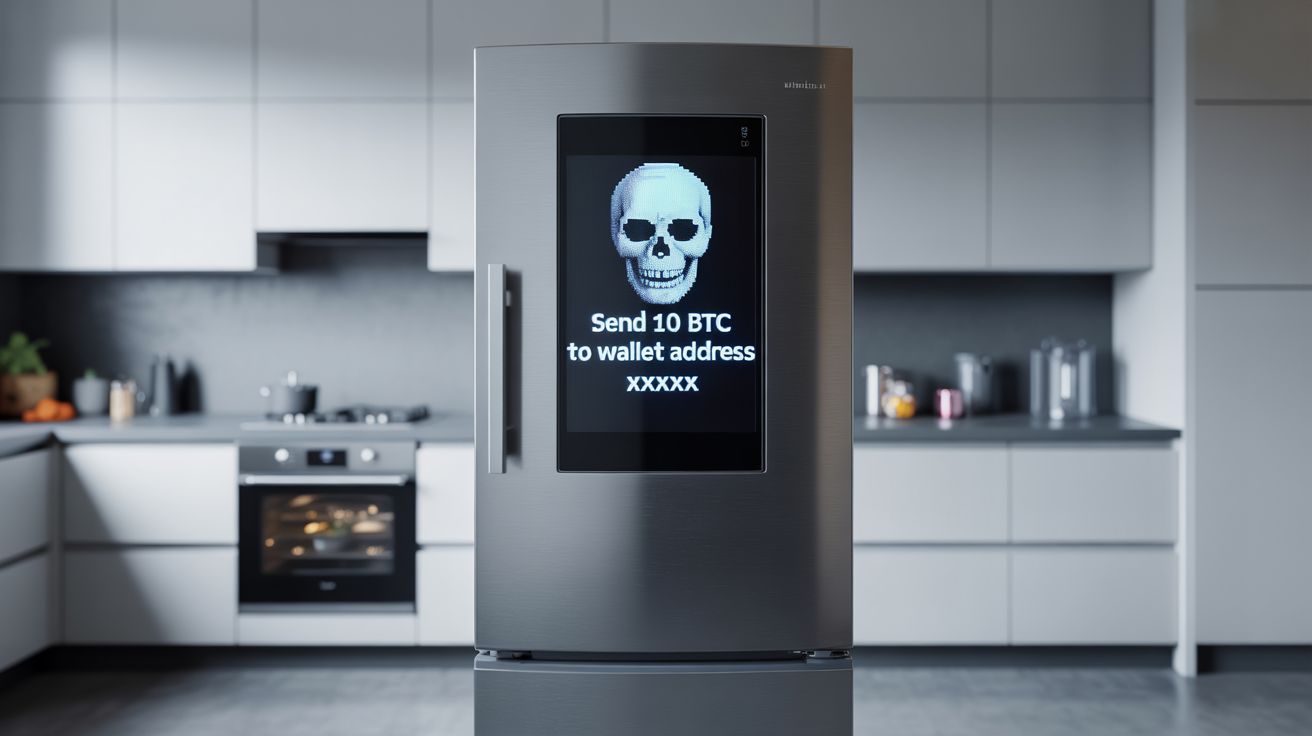The Cybersecurity Threat Hiding in Your Kitchen
A Smart Fridge Nightmare
Imagine this: you wake up one morning, ready to make your usual breakfast, only to find your smart fridge displaying a ransom note. Your grocery list, your family photos, even the temperature settings are all locked down. Sounds like a scene from a dystopian tech thriller, right? Unfortunately, this scenario is becoming increasingly plausible as our kitchens become more connected. The convenience of smart appliances comes with a hidden cost: a significantly expanded attack surface for cybercriminals.
We often think of cybersecurity in terms of our computers and smartphones, but the Internet of Things (IoT) has quietly infiltrated our homes, bringing with it a host of new vulnerabilities. Your smart fridge, your connected oven, even your Wi-Fi enabled coffee maker – all of these devices are potential entry points for hackers looking to steal your data, disrupt your life, or even use your appliances as part of a larger botnet attack. Let's delve into the specific threats lurking in your kitchen and how you can protect yourself.
The Expanding Attack Surface of Smart Appliances
The core issue lies in the fact that many smart appliances are designed with convenience in mind, often at the expense of security. Manufacturers are racing to bring innovative products to market, and security is frequently an afterthought. This results in devices with weak default passwords, outdated software, and a lack of robust security features. Think about it: how often do you update the firmware on your refrigerator? Probably never. This neglect creates vulnerabilities that hackers can exploit.
Furthermore, many of these devices collect vast amounts of data about your habits and preferences. Your smart fridge knows what you eat, when you shop, and even your dietary restrictions. This information is incredibly valuable to advertisers, but it's also a goldmine for cybercriminals. Imagine the damage that could be done if someone gained access to your family's health information through your smart scale or fitness tracker, all connected to your kitchen ecosystem.
Weak Passwords and Default Settings: An Open Door
One of the most common and easily exploitable vulnerabilities in smart appliances is the use of weak or default passwords. Many users simply don't bother to change the default password when they set up their device, leaving it wide open to attack. Hackers can easily find lists of default passwords online and use them to gain access to your appliance. This is like leaving your front door unlocked and inviting burglars in.
Beyond passwords, default settings can also pose a security risk. Many devices are configured to automatically connect to the internet and share data with the manufacturer. This data can include your location, usage patterns, and even personal information. It's crucial to review the default settings of your smart appliances and disable any features that you don't need or that compromise your privacy. Take the time to understand what data your devices are collecting and how it's being used.
The Threat of Botnets and DDoS Attacks
Even if a hacker doesn't directly target your personal data, your smart appliances can still be used to launch attacks against other targets. Cybercriminals often recruit compromised devices into botnets, which are networks of infected computers and devices that can be used to launch distributed denial-of-service (DDoS) attacks. These attacks can overwhelm websites and online services, making them unavailable to legitimate users.
Your smart fridge, with its always-on internet connection, is a perfect candidate for inclusion in a botnet. A hacker could remotely control your fridge to send spam emails, participate in DDoS attacks, or even mine cryptocurrency without your knowledge. This not only slows down your internet connection but also puts you at risk of legal liability if your device is used to commit illegal activities. The innovation that powers these devices can be turned against us if we aren't careful.
AI and the Future of Cybersecurity in the Kitchen
While AI is often seen as a threat in the context of cybersecurity, it can also be a powerful tool for defending against attacks. AI-powered security systems can analyze network traffic, identify suspicious activity, and automatically block threats. These systems can learn from past attacks and adapt to new threats, providing a more proactive and effective defense than traditional security measures.
Imagine an AI system that monitors the behavior of your smart appliances and detects anomalies, such as unusual network activity or unauthorized access attempts. This system could then automatically quarantine the affected device and alert you to the potential threat. As the number of connected devices in our homes continues to grow, AI will become increasingly essential for maintaining cybersecurity and protecting our privacy. The digital landscape is constantly evolving, and AI is key to staying ahead of the curve.
Securing Your Smart Kitchen: Practical Steps You Can Take
Fortunately, there are several practical steps you can take to secure your smart kitchen and protect yourself from cyber threats. First and foremost, change the default passwords on all of your smart appliances. Use strong, unique passwords that are difficult to guess. Consider using a password manager to generate and store your passwords securely.
Secondly, keep your devices updated with the latest security patches. Manufacturers often release updates to fix vulnerabilities and improve security. Make sure to enable automatic updates whenever possible. Thirdly, review the privacy settings of your smart appliances and disable any features that you don't need or that compromise your privacy. Finally, consider segmenting your home network by creating a separate network for your IoT devices. This can help to isolate any compromised devices and prevent them from spreading malware to other devices on your network. These apps can help you manage your network security.
The Importance of Network Segmentation
Network segmentation is a crucial security measure that involves dividing your home network into separate zones. This can be achieved by creating a guest network for your IoT devices, which isolates them from your main network where your computers and smartphones are connected. If a hacker gains access to a device on your guest network, they won't be able to access your sensitive data on your main network.
Many modern routers offer built-in support for guest networks. Simply enable the guest network feature and connect your smart appliances to it. You can also use a separate router to create a dedicated network for your IoT devices. This provides an extra layer of security and helps to minimize the risk of a widespread attack. Think of it as creating firewalls within your own home network.
Staying Informed and Vigilant in a Connected World
The cybersecurity landscape is constantly evolving, and it's important to stay informed about the latest threats and vulnerabilities. Follow cybersecurity news and blogs, and subscribe to security alerts from reputable sources. Be wary of phishing emails and suspicious links, and never click on anything that you don't trust. Remember, cybercriminals are constantly developing new and sophisticated techniques to exploit vulnerabilities.
Ultimately, the best defense against cyber threats is a combination of technical measures and common sense. By taking the steps outlined above and staying vigilant, you can significantly reduce your risk of becoming a victim of cybercrime. The convenience of smart appliances is undeniable, but it's crucial to prioritize security and protect your privacy in this increasingly connected world. Let's embrace the innovation, but do so responsibly.
Conclusion: Secure Your Kitchen, Secure Your Life
The cybersecurity threat lurking in your kitchen is real, but it's not insurmountable. By understanding the risks and taking proactive steps to secure your smart appliances, you can protect your data, your privacy, and your peace of mind. Don't let the convenience of connected devices lull you into a false sense of security. Remember, your kitchen is no longer just a place to cook and eat – it's also a potential battleground in the ongoing war against cybercrime.
Take action today to secure your smart kitchen. Change your default passwords, update your software, review your privacy settings, and consider segmenting your network. By taking these simple steps, you can significantly reduce your risk of becoming a victim of cybercrime. Don't wait until it's too late. Secure your kitchen, secure your life. Visit our website for more resources and tips on cybersecurity best practices. Download our free guide to securing your smart home today!



